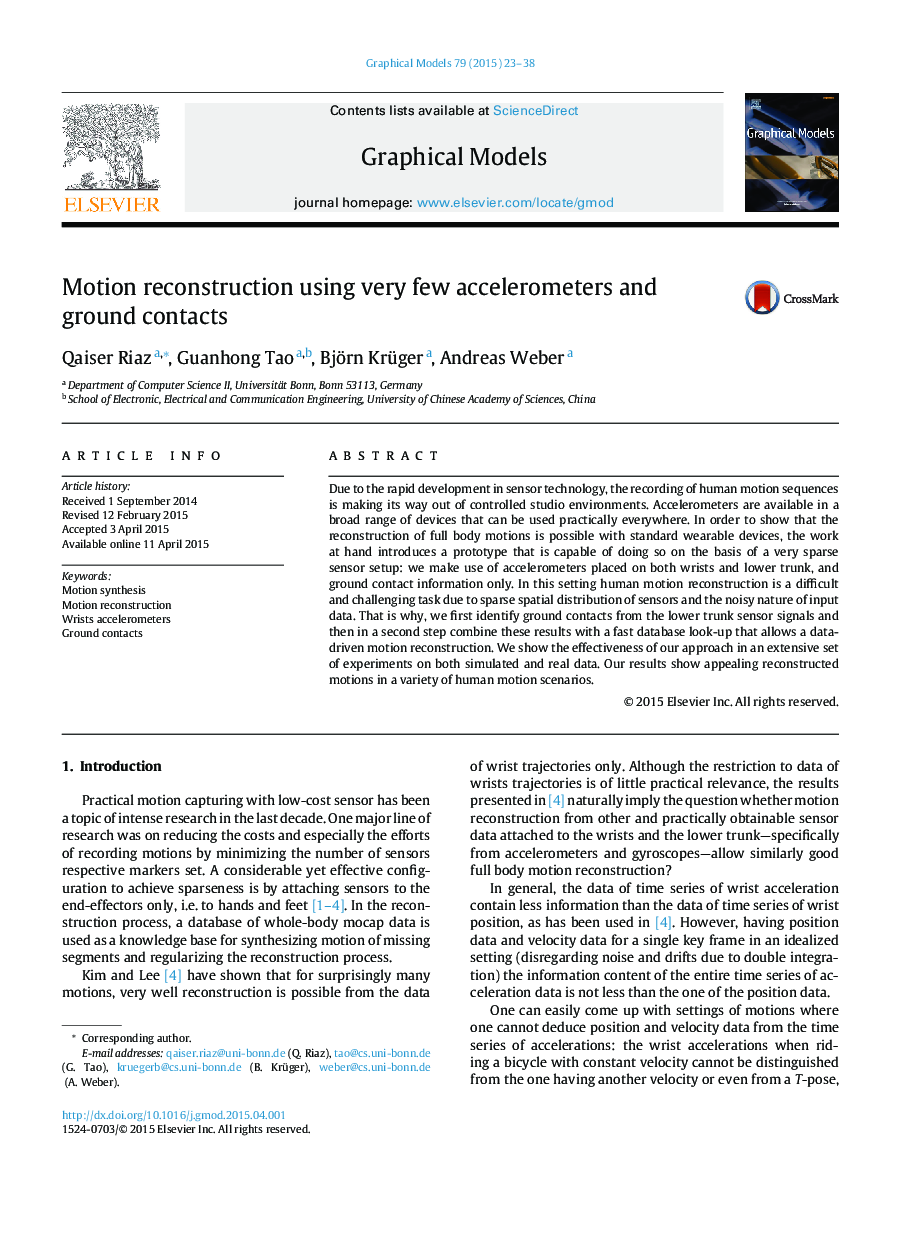| Article ID | Journal | Published Year | Pages | File Type |
|---|---|---|---|---|
| 441894 | Graphical Models | 2015 | 16 Pages |
Due to the rapid development in sensor technology, the recording of human motion sequences is making its way out of controlled studio environments. Accelerometers are available in a broad range of devices that can be used practically everywhere. In order to show that the reconstruction of full body motions is possible with standard wearable devices, the work at hand introduces a prototype that is capable of doing so on the basis of a very sparse sensor setup: we make use of accelerometers placed on both wrists and lower trunk, and ground contact information only. In this setting human motion reconstruction is a difficult and challenging task due to sparse spatial distribution of sensors and the noisy nature of input data. That is why, we first identify ground contacts from the lower trunk sensor signals and then in a second step combine these results with a fast database look-up that allows a data-driven motion reconstruction. We show the effectiveness of our approach in an extensive set of experiments on both simulated and real data. Our results show appealing reconstructed motions in a variety of human motion scenarios.
Graphical abstractFigure optionsDownload full-size imageDownload as PowerPoint slide
